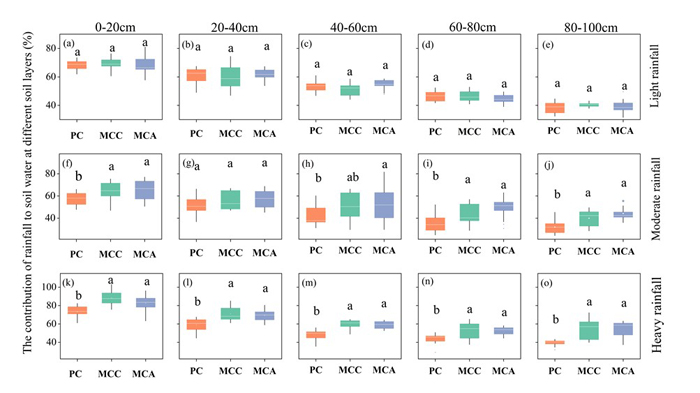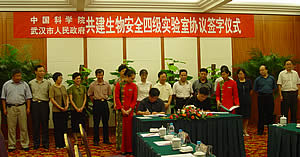
森林旅游景区生态安全影响因素的IRDS模型研究——基于扎根理论
编号
lyqk004737


中文标题
森林旅游景区生态安全影响因素的IRDS模型研究——基于扎根理论


作者单位
南京林业大学经济管理学院,南京210037;扬州大学旅游烹饪学院,江苏扬州225009;南京林业大学经济管理学院,南京210037


期刊名称
世界林业研究


年份
2015


卷号
28


期号
1


栏目编号
1


栏目名称
专题论述


中文摘要
运用探索性研究工具,分析森林旅游景区生态安全影响因素及其关系;借助经典扎根理论,建立森林旅游景区生态安全影响因素分析的总体框架;采用开放式访谈与多种类型研究资料,经过概念化、范畴化等多重编码,归纳出森林旅游景区生态安全影响因素的10个主范畴和35个范畴;在此基础上,根据上述范畴在原始资料中所呈现出的内在逻辑关系,构建了由制度环境(I)、监管与建设行为(R)、干扰活动(D)、安全状态(S)4个范畴模块构成的森林旅游景区生态安全影响因素的IRDS模型,并分析景区生态安全的影响因素模块(I,R,D)对其安全状态模块S的作用机理;最后,探讨了IRDS模型作为森林旅游景区生态安全研究的理论框架,在彰显影响主体间角色关系,强化风险源与状态、响应间关系,以及提升不同尺度下研究结果普适性等方面的优势。


关键词
扎根理论
森林旅游景区
生态安全
影响因素
IRDS模型


基金项目
国家自然科学基金基于生态-产业共生关系的林业生态安全测度研究(71173107);教育部高等学校博士点基金博导类课题生态与产业共生视角的林业生态安全测度理论与方法研究(20113204110005);国家林业局软科学研究项目我国林业实施绿色经济的多层次测度体系与管理机制研究(2013-R07);江苏省教育厅高校哲学社会科学基金指导项目森林旅游业发展对景区生态安全影响研究:以江苏省为例(2013SJD630062);扬州大学校人文社科研究基金碎片化时代的旅游风景区生态安全发展研究(206510608)


英文标题
Research on IRDS Model of Influencing Factors to Ecological Security of Forest Scenic Spot Based on Grounded Theory


作者英文名
Zheng Yongxian and Zhang Zhiguang


单位英文名
College of Economics and Management,Nanjing Forestry University,Nanjing 210037,China;College of Tourism and Culinary Science,Yangzhou University,Yangzhou 225009,Jiangsu,China;College of Economics and Management,Nanjing Forestry University,Nanjing 210037,China


英文摘要
The purpose of this paper was to create a substantive theory explaining influencing factors to ecological security in forest scenic spots and their relationships. By using classic grounded theory, the paper established the overall analysis framework of influencing factors to ecological security. The research process used various types of materials, including open-ended interviews to conclude 10 main categories and 35 categories after a series of steps like conceptualization, categorization and theory codlings. On that basis, by integrating internal logics of these categories presented in original research materials, a IRDS model interpreting the interactions among influencing factors to the ecological security of forest scenic spot was built, containing 4 category modules, i.e., Institutional Environment (I), Regulatory and Construction Acts (R), Disturbing Activation (D), and Security State (S). Then, the mechanism of effects that influencing factors of I, R, D imposed on the security sate factor of S, was analyzed. Its theoretical advantages were explored in highlighting roles of relationships within different main parts, strengthening links among sources of risk, state and response, and enhancing the universality of results at various scales in the research on ecological security of forest scenic spots.


英文关键词
grounded theory;forest scenic spot;ecological security;influencing factor;IRDS model


起始页码
23


截止页码
30


投稿时间
2014/10/9


分类号
F205;S788.2


DOI
10.13348/j.cnki.sjlyyj.2015.01.004


参考文献
[1] 刘汉洪,彭旺元.南岳衡山旅游公害及其防治对策 [J]. 旅游学刊,1991,6(1):35-38.
[2] 巩劼,陆林.旅游环境影响研究进展与启示[J].自然资源学报,2007,22(4):545-556.
[3] Mohlenbrock R H.Growing in the wind: a caribbean sampler yields everything from palm trees to cactuses[J].Natural History, 1988,97(10):34-36.
[4] 王资荣,郝小波.张家界国家森林公园环境质量变化及对策研究[J].中国环境科学,1988,8(4):23-30.
[5] Cole D N.Experimental trampling of vegetation:I.relationship between trampling intensity and vegetation response[J].Journal of Applied Ecology,1995,32(1):203-214.
[6] 刘鸿雁,张金海.旅游干扰对香山黄栌林的影响研究[J]. 植物生态学报,1997,21(2):191-196.
[7] Malmsheimer R W,Heffernan P,Brink S,et al.Potential effects of climate change on forests[J].Journal of Forestry,2008,106(3):129-131.
[8] 王洪翠,吴承祯,洪伟,等.PSR 指标体系模型在武夷山风景区生态安全评价中的应用[J].安全与环境学报,2006,6(3):123-126.
[9] 关彩虹,胡炜,成文连,等.黄山风景名胜区生态安全现状分析[J].安全与环境学报,2005,5(3):54-56.
[10] 张智光.基于生态—产业共生关系的林业生态安全测度方法构想[J]. 生态学报,2013,33(4):1326-1336.
[11] 范弢,胡文英,李捷.泸沽湖景区生态安全评价[J].云南地理环境研究,2008,20(2):78-81.
[12] 米锋,黄莉莉,孙丰军.北京鹫峰国家森林公园生态安全评价[J].林业科学,2010,46(11):52-58.
[13] Wang C H,Buckley R.Shengtai anquan: managing tourism and environment in China's forest parks[J]. AMBIO: A Journal of the Human Environment,2010,39(5):451-453.
[14] Glaser B G,Strauss A L.The discovery of grounded theory: strategies for qualitative research[M].New York:Aldine De Gruyter,1967:1.
[15] Glaser B G.Theoretical sensitivity: advances in the methodology of grounded theory [M].Mill Valley,CA:Sociology Press,1978:9-20.
[16] Glaser B G.The grounded theory perspective: conceptualization contrasted with description[M].Mill Valley:Sociology Press,2001:145-146.
[17] Egan T M.Grounded theory research and theory building[J].Advances in Developing Human Resources,2002,4(3):277-295.
[18] Glaser B G.Doing grounded theory: issues and discussions[M].Mill Valley:Sociology Press,1998:135-139.
[19] 吴文智,赵磊.美国公共景区政府规制经验评价及对我国的启示[J].管理现代化,2013(2):126-128.
[20] 但新球,吴南飞.森林旅游中非生态旅游行为及行为守则研究[J].中南林业调查规划,2002,21(1):34-36.
[21] 毛帅,聂锐.浅谈休闲农业游客行为与环境容量的冲突及解决思路[J]. 生态经济,2006(10):197-200.
[22] 吴亚平,陈志永,费广玉.国家风景名胜区利益相关者阶段性博弈演化分析:以红枫湖为个案[J].生态经济,2011(9):145-149.
[23] 王红.中国公共资源依托型旅游景区 (点) 政府规制的变迁研究[J].中国人口·资源与环境,2011,21(1):148-154.
[24] Wolfslehner B,Vacik H.Evaluating sustainable forest management strategies with the analytic network process in a pressure-state-response framework [J].Journal of Environmental Management,2008,88(1):1-10.
[25] 马国民,徐淑梅,李圆慧.帽儿山景区旅游生态足迹研究[J].地理与地理信息科学,2011,27(5):109-112.
[26] Olsson E G A,Austrheim G,Grenne S N.Landscape change patterns in mountains, land use and environmental diversity, Mid-Norway 1960-1993[J].Landscape Ecology,2000,15(2):155-170.
[27] 周大庆.旅游景区治理绩效:政府与利益相关者的博弈[J].经济地理,2013(8):188-192.
[28] Stoll-Kleemann S,Welp M.Towards a more effective and democratic natural resources management[M].Berlin:Berlin Heidelberg,2006:17-39.
[29] Svarstad H,Petersen L K,Rothman D,et al.Discursive biases of the environmental research framework DPSIR[J].Land Use Policy,2008,25(1):116-125.
[30] 刘力,邱继勤.旅游景区土地利用生态安全评价探讨:以重庆市武隆县仙女山景区为例[J].国土与自然资源研究,2012(4):32-33.
[31] Gössling S,Hansson C B,Hörstmeier O,et al.Ecological footprint analysis as a tool to assess tourism sustainability[J].Ecological Economics,2002,43(2):199-211.
[32] 时卉,杨兆萍,韩芳,等.新疆天池景区生态安全度时空分异特征与驱动机制[J].地理科学进展,2013,32(3):475-485.
[33] 肖笃宁,陈文波.论生态安全的基本概念和研究内容 [J].应用生态学报,2002,13(3):354-358.
[34] 张智光.林业生态安全的共生耦合测度模型与判据[J].中国人口·资源与环境,2014,24(8):90-99.
[35] 周旭.我国生态安全评价研究综述[J].西华师范大学学报:自然科学版,2007,28(3):200-206.
[36] 周国海.旅游地生态安全状态评价与维护:以武陵源风景名胜区为例[J].社会科学家,2009 (11):91-94.
[37] 王根绪,程国栋,钱鞠.生态安全评价研究中的若干问题[J].应用生态学报,2003,14(9):1551-1556.
[38] Mysiak J,Giupponi C,Rosato P.Towards the development of a decision support system for water resource management[J].Environmental Modelling & Software,2005,20(2):203-214.
[39] Giupponi C.Decision support systems for implementing the European water framework directive: the MULINO approach[J].Environmental Modelling & Software,2007,22(2):248-258.
[40] 张智光.人类文明与生态安全:共生空间的演化理论 [J].中国人口·资源与环境,2013,23(7):1-8.


PDF全文
浏览全文


-
相关记录
更多
- 正交胶合木结构建筑发展现状及影响因素 2023
- 林木高径比研究综述 2023
- 热改性木材化学成分变化及其影响因素 2022
- 产业政策对林业产业结构优化影响研究进展 2022
- 中国干旱半干旱区土壤微生物分布特征及其影响因素 2022
- 国内外林地流转影响因素及成效研究进展 2022
 打印
打印



